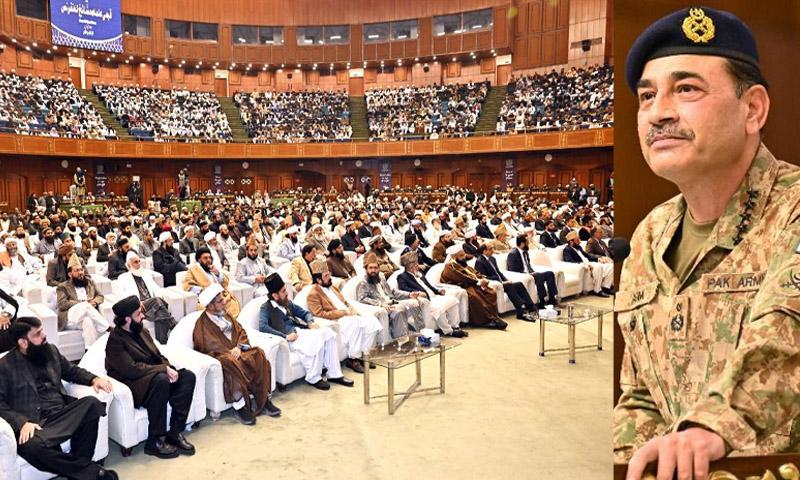The Committee, however, observed that despite the sharp deceleration in February, the level of inflation remains high and its outlook is susceptible to risks amidst elevated inflation expectations.


Karachi: The Monetary Policy Committee (MPC) decided to keep the policy rate unchanged at 22 percent. In approaching today’s decision, the Committee noted that inflation, in line with earlier expectations, has begun to decline noticeably from H2-FY24.
The Committee, however, observed that despite the sharp deceleration in February, the level of inflation remains high and its outlook is susceptible to risks amidst elevated inflation expectations.
This warrants a cautious approach and requires continuity of the current monetary stance to bring inflation down to the target range of 5 – 7 percent by September 2025.
The Committee reiterated that this assessment is also contingent upon continued targeted fiscal consolidation and timely realization of planned external inflows.
The MPC noted a few key developments since its last meeting, which have implications for the macroeconomic outlook. First, the latest data continues to depict moderate pick-up in economic activity, led by rebound in agriculture output. Second, the external current account balance is turning out better than anticipated and has helped maintain FX buffers despite weak financial inflows.
Third, while inflation expectations of businesses have shown a steady increase since December, those for consumers have also inched up in March.
Lastly, on the global front, while the broader trend in commodity prices remained benign, oil prices have increased; partly reflecting the continued tense situation in the Red Sea.
Moreover, amidst uncertainty regarding the inflation outlook, key central banks in both advanced and emerging economies have continued to maintain a cautious monetary policy stance in recent meetings.
Real Sector
Incoming data supports the MPC’s earlier expectation of moderate recovery in economic activity in FY24 with real GDP growth to remain in the range of 2 – 3 percent. Agriculture sector remains the key driver. After a strong performance of Kharif crops (especially cotton and rice), prospects for wheat crop also look promising due to increase in area under cultivation, better input conditions, and higher output prices. Denser vegetation of wheat crop, as captured by satellite images, also support this assessment. In the industrial sector, large-scale manufacturing, despite a slight decline of 0.5 percent during July-January is expected to recover in the coming months due to improved capacity utilization and employment conditions and favorable base effect. Furthermore, knock-on impact of commodity producing sectors and other leading indicators point towards gradual recovery in the services sector.
External Sector
The current account recorded a deficit of $269 million in January 2024. This resulted in a cumulative deficit of $1.1 billion during July-January FY24, which is down by around 71 percent y/y. The MPC noted that the improvement largely owes to narrowing of the trade deficit, driven by both an increase in exports and a decline in imports. The exports have risen on the back of higher food exports, whereas import payments have remained subdued due to better domestic agriculture output, moderate domestic demand and supportive global commodity prices. Moreover, workers’ remittances have been rising consistently on y/y basis since October 2023, supported by incentives and regulatory reforms to channelize inflows via formal channels. Financial inflows showed a modest decline in January amidst continuing public debt repayments in the absence of significant official and private sector inflows. The MPC assessed that the current account deficit is likely to remain closer to the lower bound of 0.5 to 1.5 percent of GDP forecast range for FY24, which will support the FX reserves position.
Fiscal sector
The latest data on fiscal accounts shows continuing fiscal consolidation. During H1-FY24, the primary surplus improved to 1.7 percent of GDP from 1.1 percent in the same period last year, while the overall fiscal deficit deteriorated to 2.3 percent of GDP from 2.0 percent in H1-FY23. Improvement in the primary surplus to GDP ratio is mainly contributed by better revenue collection, primarily from non-tax sources, and relatively contained non-interest expenditures. Sizeable increase in interest payments amidst high debt levels and increasing reliance on costly domestic financing led to an expansion in the overall deficit. The MPC emphasized that the continuation of fiscal consolidation is essential for ensuring overall macroeconomic and price stability.
Money and credit
Since the last MPC meeting, as expected, the broad money (M2) growth (y/y) has moderated to 16.1 percent in February 2024 from 17.8 percent in December. This moderation came from lower growth in net domestic assets of the banking system, owing mainly to a broad-based contraction in private sector credit and commodity financing operations. The MPC also noted that the growth in reserve money continued to decelerate sharply to 8.2 percent in February. Moreover, the currency to deposit ratio continued to decline due to the strong growth in bank deposits along with a declining trend in currency in circulation. These trends in monetary aggregates bode well for the inflation outlook.
Inflation outlook
The MPC noted that headline inflation registered a broad-based and considerable y/y decline from 28.3 percent in January to 23.1 percent in February. While food inflation continued to trend down, core inflation, which had been sticky, also decelerated to 18.1 percent in February from 20.5 percent in January. The improvement in inflation broadly reflects the combined impact of contractionary monetary policy, fiscal consolidation, better food supplies, moderating global commodity prices and favorable base effect.
The MPC noted that while energy inflation also decelerated on y/y basis in February, the adjustments in administered energy prices have continued to contribute to inflation directly and indirectly. This has implications for the needed sustained decline in inflation expectations of both consumers and businesses. Going forward, any further adjustments in administered prices or fiscal measures that may push prices up pose risk to the near and medium-term inflation outlook. Cognizant of these risks, the Committee assessed that it is prudent to continue with the current monetary policy stance at this stage
Cold, partly cloudy weather expected over most parts of country
- 13 minutes ago

ChatGPT can now use Adobe apps to edit your photos and PDFs for free
- 5 hours ago

Sony’s new PS5 DualSense controller might have way more battery life
- a day ago
PM Shehbaz emphasises to resolve disputes peacefully through dialogue, diplomacy
- 27 minutes ago

The “Trump Gold Card,” briefly explained
- 12 hours ago

Gold prices jump in Pakistan, global markets
- 18 minutes ago

Antigravity’s 360-degree drone is here to help you forget DJI
- a day ago

The Supreme Court sounds surprisingly open to a case against a death sentence
- 3 hours ago
Pakistan military court sentences ex-spy chief Faiz Hameed to 14 years in prison
- an hour ago

Want a new job? Be (sort of) annoying.
- 12 hours ago
Japan lifts tsunami warning after 6.7-magnitude earthquake
- a few seconds ago
Chris DeMarco excited to take over Liberty when Warriors duties end
- 13 hours ago










